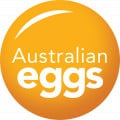Australian Eggs

With the move towards holding hens in production until 100 weeks of age, Australian egg farmers have stipulated a need to find ways to increase a hen’s productive life cycle while maintaining quality egg production. Currently, the birds being brought to lay are not ideal for being held in production until 100 weeks of age. The industry recognises the need to conduct research to identify practical management techniques that can be used to successfully extend flock life to 100 weeks and drive economic and sustainability improvements across the industry.
This project looks to complement a series of projects undertaken over previous years on feed efficiency and pullet nutrition and will explore the effects of diet and lighting on pullets from
The aim of this project is to evaluate the opportunities for growers to manage pullet rearing, through photo-stimulation and feeding for production requirements, both singularly or together, to improve flock uniformity, egg production and persistency of production, egg size and egg quality, from POL to very late lay. Hen physiology, carcase composition, bone strength and bird health will also be evaluated at POL and during lay. This will identify management tools that can be used by growers during rearing to generate flocks capable of persistent egg production and egg shell quality, with optimal bird health, until very late lay. Additionally the minimum bird weight beyond which bird performance is compromised is likely to be established.

-crop-850x675.png)
Have questions?
Find answers to our most frequently asked questions on research projects, commercial opportunities, organisations and more.
Still have questions or have feedback on the site? Please get in touch by completing our enquiry form.